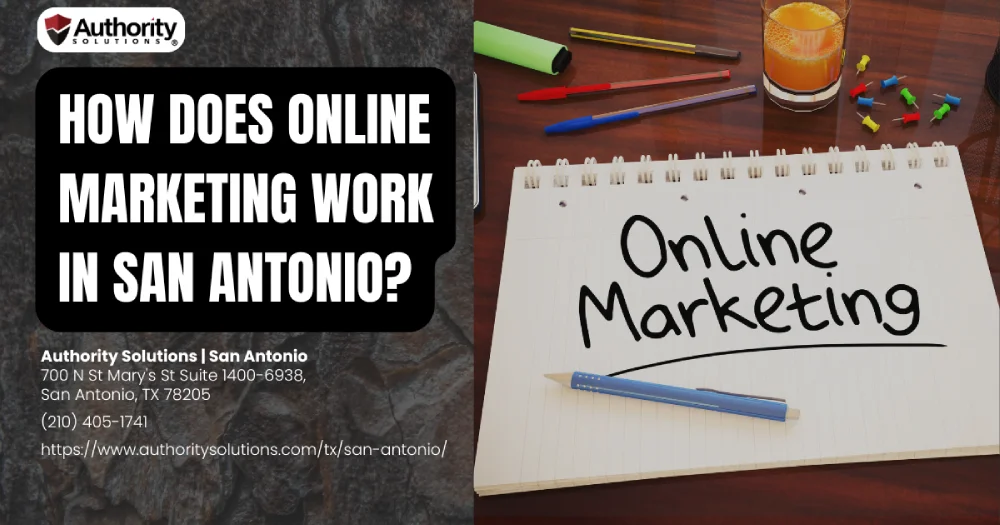Creating A Strong Brand Identity: Branding In Internet Marketing Services
Are you looking to establish a strong brand identity for your business? In today's digital age, it is crucial to have a solid branding strategy in place to stand out from the competition and connect with your target audience. Internet marketing services offer numerous opportunities to develop and promote your brand, but where do you start?
This article will guide you through the process of creating a strong brand identity in internet marketing services. You will learn how to define your brand, implement it across all channels, build customer trust and loyalty, and measure its success. By following these steps, you can establish an effective branding strategy that resonates with your customers and sets you apart from the rest. Let's dive in!
Understanding the Importance of Branding in Internet Marketing Services
You can't underestimate the significance of branding in internet marketing services, as it's key to building a strong online presence and establishing trust with potential customers. Branding is about more than just creating a logo or choosing a color scheme. It involves defining your company's values, personality, and unique selling proposition (USP). Your brand should convey who you are and what makes you different from your competitors.
A strong brand identity serves as the foundation for all of your marketing efforts. It provides clarity on how to communicate with your target audience and ensures consistency across all touchpoints, from your website to social media profiles to email newsletters. By having a cohesive brand message, you can help build brand recognition and loyalty over time.
Branding also plays a critical role in attracting new customers. In today's crowded digital landscape, consumers have endless choices when it comes to products and services. A well-defined brand identity helps cut through the noise by communicating why someone should choose your business over others. Ultimately, branding is an investment in the long-term success of your business that pays off in increased customer trust, loyalty, and revenue growth.
Defining Your Brand Identity
When defining your brand, it's important to consider what sets you apart from your competitors. This means taking a good look at what you offer and how it differs from others in your industry. Start by identifying your unique selling proposition (USP), which is the one thing that sets you apart from everyone else. Your USP should be something that resonates with your target audience and can be used as the foundation for building your brand identity.
Once you have identified your USP, it's time to define your brand personality. This includes things like tone of voice, visual style, and overall persona. To help give yourself some direction, create a list of adjectives that describe the personality traits you want associated with your brand. For example, if you want to be seen as innovative and cutting-edge, use words like "forward-thinking"or "trendsetting"to guide the development of your brand identity.
To further define your brand identity, consider creating a mood board or style guide that visually represents the look and feel of your brand. This can include color palettes, typography choices, imagery styles, and more. The goal is to create a cohesive visual language that will help reinforce your brand personality across all channels.
By defining these key elements of your brand identity - USP, personality traits, and visual style - you'll have a strong foundation for implementing it across all channels. From social media posts to website design to email marketing campaigns, having a clear understanding of who you are as a brand will make it easier to communicate effectively with customers and build lasting relationships with them.
Implementing Your Brand Identity Across All Channels
When it comes to implementing your brand identity, there are three key areas to focus on: website design and user experience, social media strategy, and content marketing. Your website should not only reflect your brand visually, but also provide a seamless user experience that reinforces your message. Social media is an essential tool for connecting with your audience and building brand awareness, so having a well-defined strategy is crucial. Lastly, content marketing allows you to share your story in a way that resonates with your target audience and establishes you as an authority in your industry.
Website Design and User Experience
With a sleek and intuitive design, website visitors will easily navigate and engage with your brand. Your website should reflect the unique personality of your brand while also providing a user-friendly experience to keep visitors engaged. When designing your website, consider these key elements:
- Visual hierarchy: Use contrasting colors, font sizes, and placement to create an organized layout that directs visitors' attention to important information.
- Mobile optimization: Ensure that your website is optimized for mobile devices since more than half of internet traffic comes from mobile devices.
Creating a positive user experience on your website can help increase engagement with your brand. With these elements in mind, you can ensure that visitors not only stay on your site longer but also develop a strong connection with your brand.
As social media platforms continue to grow in popularity, it's crucial to have a solid strategy in place for promoting your brand online.
Social Media Strategy
To effectively promote your brand online, you'll need to develop a solid social media strategy that resonates with your target audience and reflects the unique personality of your business. Social media is a powerful tool for building relationships with customers and increasing brand awareness. It allows businesses to engage with their audience in real-time, respond to customer inquiries and concerns, and share valuable content that showcases their expertise.
When developing a social media strategy, it's important to identify which platforms will be most effective for reaching your target audience. Each platform has its own strengths and weaknesses, so it's essential to choose the ones that align with your overall marketing objectives. Once you've identified the right platforms, it's time to create engaging content that captures the attention of your target audience and encourages them to interact with your brand. This leads us into our next section about content marketing…
Content Marketing
You'll love how content marketing can help you connect with your audience on a deeper level and establish your company as a thought leader in your industry. By creating valuable, educational, and informative content that resonates with your target market, you can position yourself as an expert in your field whose insights are worth paying attention to.
When done well, content marketing can also enhance the overall experience of interacting with your brand. By delivering high-quality content that answers questions and solves problems for your customers, you're showing them that you care about their needs and are committed to providing value beyond just selling products or services. This builds trust and loyalty over time and sets the stage for deeper engagement with your brand.
Building Customer Trust and Loyalty Through Your Brand Identity
Imagine walking into your favorite store and immediately recognizing the brand identity that you trust and have loyalty towards. This is the power of a strong brand identity. Building customer trust and loyalty through your brand identity is crucial in internet marketing services. A strong brand identity helps customers feel emotionally connected to your company, leading to increased sales and customer retention.
One way to build trust and loyalty is by consistently delivering high-quality products or services that align with your brand values. If you advertise yourself as an eco-friendly company, for example, make sure your products are environmentally friendly and sustainable. Customers who value sustainability will appreciate this effort and be more likely to continue doing business with you.
Another important aspect of building customer trust is ensuring transparency in all aspects of your business. Be honest about any mistakes or shortcomings, communicate clearly with customers about product information or updates, and be open about how your company operates. Transparency builds credibility, which goes a long way in establishing trust with customers.
Establishing trust and loyalty should be at the forefront of every company's branding strategy. By creating a strong brand identity that aligns with customer values, consistently delivering high-quality products or services, and being transparent in all aspects of business operations, you can build lasting relationships with customers that lead to long-term success.
This subtopic highlights the importance of building customer trust through a strong brand identity- but how do you measure its success? The next section will delve into strategies for measuring the impact of your branding efforts on customers' perceptions and behaviors without breaking the bank!
Measuring the Success of Your Brand Identity
Now, let's explore how you can measure the success of your brand and see if it's resonating with your target audience. Measuring your brand identity can help you determine if your branding efforts are effective in reaching out to your desired customers. Here are three ways to measure the success of your brand identity:
- Conduct a Brand Awareness Survey: A survey is a great way to gauge how well-known and recognized your brand is among consumers. You can ask questions about how familiar they are with your business, products or services, as well as their perception of them.
- Analyze Social Media Engagement: Social media platforms provide an avenue for businesses to connect with their audience on a more personal level. By analyzing engagement metrics such as likes, comments, shares and followers, you can determine whether or not your audience is engaging with and responding positively to your content.
- Track Website Traffic and Conversions: Your website is often the first point of contact between potential customers and your business. By tracking website traffic and conversions (such as email sign-ups or purchases), you can assess whether or not people are finding value in what you offer.
By measuring the success of your brand identity through these methods, you'll have a better understanding of where improvements need to be made. Remember that creating a strong brand takes time and effort - don't get discouraged if results aren't immediate! Keep monitoring progress, making adjustments when necessary, and staying consistent with messaging across all channels.
Lastly, keep in mind that there are many factors that contribute to building a successful brand beyond just measurable metrics. Building trust through transparency and consistently delivering high-quality products or services will ultimately drive long-term loyalty from customers who align with what you stand for.
Frequently Asked Questions
How do you choose the right color scheme for your brand identity?
Choosing the right color scheme for your brand identity involves considering the psychology behind colors and their associations with different emotions. Use colors that align with your brand's personality and message, while also standing out from competitors.
What are some common mistakes to avoid when defining your brand identity?
When defining your brand identity, avoid common mistakes such as being too generic or inconsistent. Stay true to your values and target audience, while also ensuring consistency across all platforms and messaging.
How can you ensure consistency in your brand messaging across different channels?
To maintain consistent brand messaging across various channels, ensure that your tone, voice and visuals are uniform. Use style guides, train employees on brand guidelines, and monitor social media for consistency.
What are some effective strategies for building customer loyalty through your brand identity?
To build customer loyalty, focus on creating personalized experiences and consistently delivering on your brand promise. Use social media to engage with your audience, offer exclusive promotions, and provide exceptional customer service to foster a strong emotional connection.
What metrics should you use to measure the success of your brand identity?
To measure the success of your brand identity, consider metrics such as brand awareness, customer loyalty, and engagement rates on social media. These indicators can provide insight into the effectiveness of your branding strategies and help to improve future campaigns.
Conclusion
Congratulations! You have successfully learned about creating a strong brand identity in internet marketing services. By understanding the importance of branding, defining your brand identity, implementing it across all channels, and building customer trust and loyalty through it, you are now well-equipped to establish a powerful online presence.
Remember that measuring the success of your brand identity is crucial in ensuring its effectiveness. Keep track of key performance indicators such as website traffic, conversion rates, social media engagement, and customer feedback. With consistent effort and dedication towards building your brand identity, you will be able to stand out from the competition and achieve long-term success in internet marketing.









